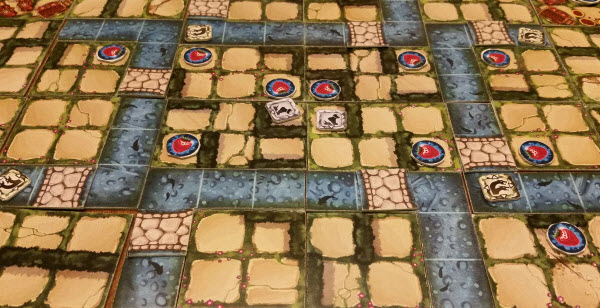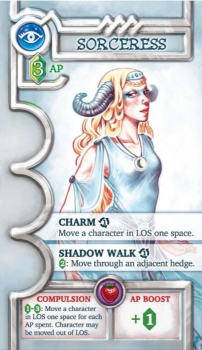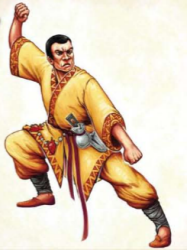Think back to the last time you went strawberry picking. Remember how it was a warm, sunny day. Remember the sweet smell of the fresh strawberries on the vine and the juicy taste of ones newly plucked.
Also, remember how you had to fight off invaders attempting to steal from your strawberry patch?
…and the hydras in the moat?
…and how you gained magical powers from having those strawberries in your possession?
Ahh yes, those were the days…
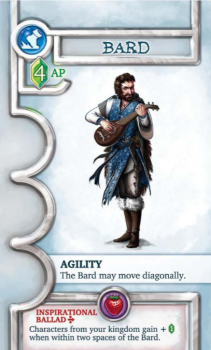
Arrow Fodder Exhibit A: Basic-side Bard.
Prototype Shown
Alright, so maybe that wasn’t exactly how it went down for you (which is a shame), but in Brookstick Monkey’s inaugural game, Imperial Harvest, that’s precisely what transpires. Imperial Harvest takes you to the land of Feorhyrna, where there exists a very special kind of magical strawberries, imbuing those that possess them with enhanced abilities. And everybody wants them because, you know, magical strawberries. The premise may sound a bit offbeat, but let us take you down to the strawberry fields in the Imperial Gardens.
Principally played by two players, the game is a conflict between two rival factions: the Imperial Servants who are harvesting and collecting strawberries from the royal garden, and the Northern Raiders who’d like to make off with a cart or twelve. Each player has three characters, each with their own unique abilities and a limited number of Action Points to spend every turn.
However, the Bard character is the same for both sides. Because everyone can make use of an expendable Bard.
Each side uses a scant seven turns to run around the board, grab strawberries, and then either hold on to them until the end of the game, or deposit them in their team’s dropoff location on the opposite end of the board from their starting location. Picking up strawberries rewards you with a Victory Point, whereas having them on your person or in the harvest location awards VP at the end of the game.
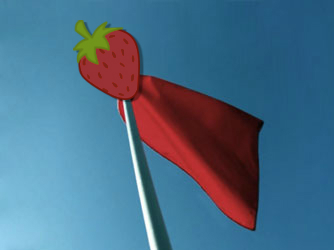
It’s sort of like capture the flag, but with strawberries.
Played out on a tile board, the precise layout to Imperial Harvest changes with each playthrough. In general though, the game has player bases opposite their harvest drop locations and the middle of the board contains both a treacherous waterway and the biggest concentration of strawberries.
To that end, Imperial Harvest is incredibly modular, and it is easily the game’s best attribute given that it’s designed to be a tactical game played over 20ish minutes or so. Most tactics-centric games are known for having a good deal of variability, but that also means more components, extra rules, and more complexity. It’s size aside, Imperial Harvest provides an admirable array of gameplay options.
Every land tile is double-sided and interchangeable, for instance, ensuring that players never end up with the same layout when you’re trying to dash for those gooey red gems. That fact alone gives the game a healthy dose of replayability. This says nothing of the alternative board formations that can be made with the components, as the base game alone provides three different schemes at a minimum that can be used between two players.
Paired with this fact are the characters themselves. Each faction may get three characters, but they too are double-sided. One side offers simplified versions of the characters with a single innate ability and single special ability while holding a strawberry. The latter side gives the character both abilities from the Basic side right off the bat, while offering a new strawberry power instead. Either side can be useful depending on the style of the game you seek. The Basic characters may have fewer strategic options, but using them makes Imperial Harvest into a very straightforward snatch and grab mission rather than a skirmish game. However, the game really hits its stride with the Advanced character traits. These provide a rewarding degree of tactical choice for a game that can be finished in less than a half hour.
Moreover, the play style of each side is notably different, adding even more variability. The Raider’s Barbarian and Sorceress characters, for example, are more offensive in nature while the Imperial’s Monk and Guardsman tend to be more defensive. Yet both sides prove to be well balanced, for although attacking your opponents can be useful at times – eliminating any strawberries they’re carrying and sending them back to their base – it’s also time you could be spending getting more strawberries instead.
Collecting strawberries is, of course, the heart of Imperial Harvest. With precious few rounds, the race begins immediately to snatch up as much fruit as you can. The added wrinkle is that you are limited to only using two of your three characters each turn, and no character can spend more than one turn on the sidelines. Thus, you’re constantly rotating your trio of Harvesters as you decide what your strategy may be.
Alternatively, you also have the option of forfeiting one of your two character’s actions for a turn to instead move one of the hydras in the water.
Yeah, remember the hydras? They’re jerks. They are immune to everything and attack anyone adjacent to them. Luckily they’re too fat on strawberries to leave the water.
The hydras can seem somewhat out of place in a game about a strawberry garden, but they are nevertheless yet another strategic choice available to the players. You are free to let them float about idly or use them to hamper your opponent. There is, admittedly, quite a bit of entertainment value in parking one next to one of the bridges spanning the water to prevent your opponent’s movement or using a character ability to shove them into the hydra’s hangry path.
At the end, the player with the most accumulated VP (i.e. the person with the better strawberry picking team) wins. Even with a decent amount of light strategy, the seven rounds to Imperial Harvest goes by briskly…if you stick to two players.
One of the selling points to Imperial Harvest is its scalability. The game is billed predominately as a two player game, and that’s where it thrives best, offering players a tactical Micro-game. With each copy of the game, however, the board grows to accommodate additional players (think Town Center or Star Realms).
In the case of Imperial Harvest, it turns into a team affair for all those lovely red goodies. This adds accessibility by letting more people play without making the game substantially more complicated, but it also increases the time commitment and can lose some of its whimsical flavor if it turns into a game of considerable length. Imperial Harvest is designed well enough to handle four, six, or even eight players – and who wouldn’t want more hydras swimming around? – but like gardens themselves, smaller is often more manageable.
For operating with all of a 20-30 minute play window, Imperial Harvest packs a lot into its small box. Successfully implementing a tactical skirmish game is never an easy task, let alone one that is designed to be short, modular, portable, and scalable. Imperial Harvest delivers all of that handily. Hiding behind a peculiar theme full of wonderberries and the people who desire them lies a solid small-scale strategy game that delivers a quick experience with a fair amount of decision-making. The mechanics are both intuitive and simple to teach, and before long players are navigating hedges, dodging hydras, and scooping up as much magically delicious fruit as they can. Some of its lighthearted luster can wane as it expands to more players and longer play times, but between advanced character options and the ability to create all sorts of unique map layouts, Imperial Harvest has a bounty of options for a small form game.
If this all sounds sweet, then be sure to head over to its Kickstarter before the strawberries are all gone. They don’t last forever after all. Especially magical ones.
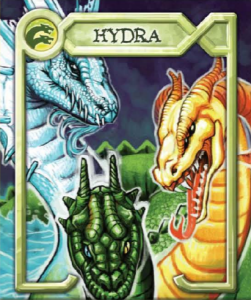
Also, Hail Hydras!

